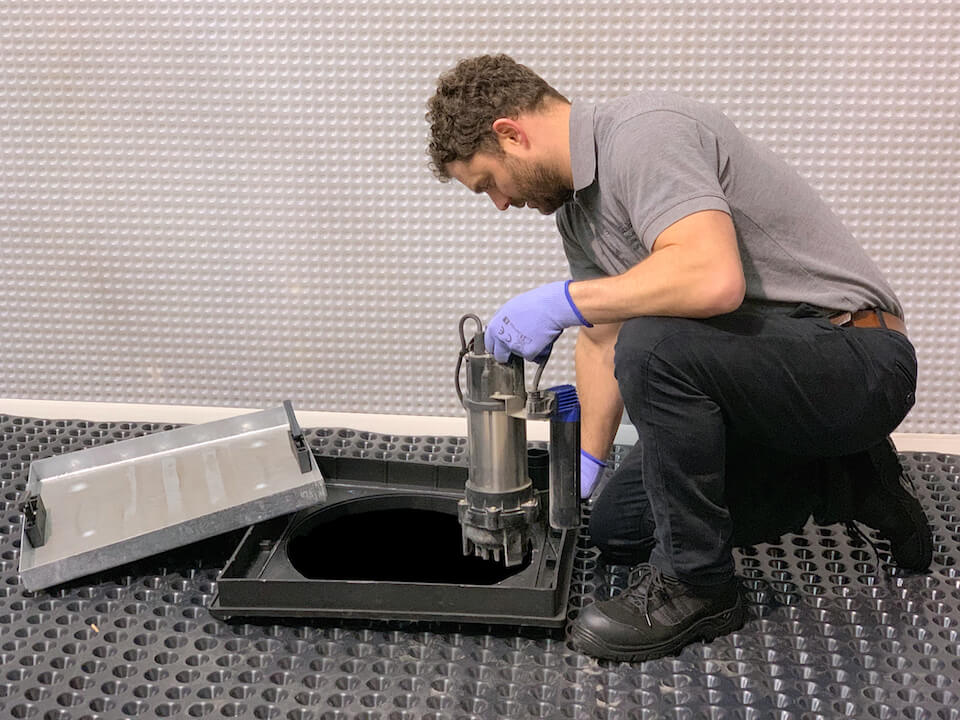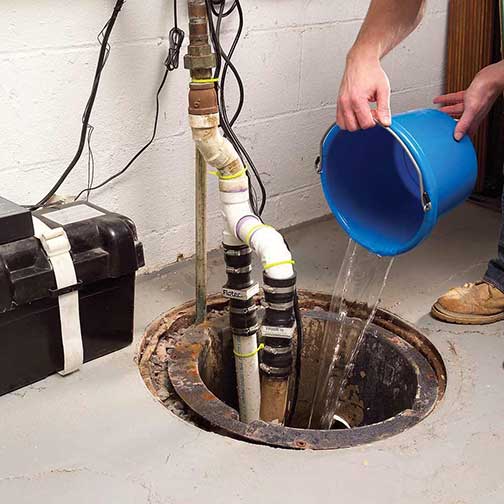Simple Instructions for Taking Care of a Sump Pump
Simple Instructions for Taking Care of a Sump Pump
Blog Article
In this article in the next paragraphs you can find lots of sound insight concerning Keep Your Sump Pump Clean, It'll Keep You Dry.

Sump pumps are important components in numerous homes, especially in locations susceptible to flooding or too much wetness. They assist stop water damage by successfully eliminating excess water from cellars or crawl spaces. Nonetheless, like any other home appliance, sump pumps call for normal maintenance to guarantee they work properly when required the most. Cleaning your sump pump is a crucial part of its maintenance, and comprehending exactly how to do it appropriately can conserve you from pricey repair work and possible calamities.
Introduction
Maintaining a tidy sump pump is important for its proper performance and durability. Neglecting this essential task can bring about clogs, breakdowns, and eventually, water damages to your home. Therefore, finding out exactly how to cleanse a sump pump is critical for home owners that rely on these tools to keep their basements dry and protected.
Indicators of a Dirty Sump Pump
Understanding when your sump pump needs cleaning is crucial for protecting against potential breakdowns. Some typical indications that indicate an unclean sump pump include weird noises throughout procedure, lowered water circulation, and noticeable particles in the pit. If you discover any one of these symptoms, it's important to clean your sump pump promptly to avoid any kind of further issues.
Planning for Cleaning
Prior to you begin cleaning your sump pump, it's important to take some safety and security preventative measures. Start by shutting off the power to the pump to prevent any type of electrical mishaps. In addition, wear ideal protective gear, such as gloves and safety glasses, to protect yourself from dirt, particles, and potential microorganisms.
Understanding the Sump Pump
Prior to diving right into the cleaning procedure, it's necessary to have a fundamental understanding of how a sump pump functions. Generally set up in a pit or container below the cellar floor, a sump pump consists of numerous vital parts, consisting of a pump, a float switch, and a discharge pipeline. When water accumulates in the pit, the float switch activates the pump, which after that pumps the water out through the discharge pipe, away from the structure's structure.
Detailed Guide to Cleaning a Sump Pump
Shutting down the Power
Begin by disconnecting the power supply to the sump pump to avoid any accidents while cleansing.
Checking for Correct Performance
Prior to re-installing the pump, carry out a quick test to make certain that the float switch turns on the pump appropriately. Pour some water right into the sump pit and observe the pump's procedure. If whatever is working correctly, you can reconstruct the pump and reconnect the power supply.
Removing Particles and Dust
Utilize a bucket or an inside story to get rid of any kind of noticeable particles, dust, or debris from the sump pit. Dispose of the particles correctly to prevent it from clogging the pump or the discharge pipeline.
Cleansing the Pump and Drift Change
When the pit is clear of particles, thoroughly remove the pump from the pit. Check the pump and the float switch for any kind of indicators of damages or wear. Use a soft brush or fabric to clean up the surfaces and eliminate any collected crud.
Flushing the System
After cleaning the pump and float switch, purge the sump pit with tidy water to eliminate any type of continuing to be dust or debris. This will aid make certain that the pump runs efficiently and successfully.
Upkeep Tips to Keep Your Sump Pump Clean
In addition to regular cleansing, there are several upkeep pointers you can follow to maintain your sump pump in optimum condition:
Verdict
Cleansing your sump pump is an important element of its upkeep and makes sure that it operates successfully when you require it one of the most. By adhering to the actions outlined in this overview and integrating routine upkeep into your regimen, you can prolong the lifespan of your sump pump and protect your home from water damages.
6 STEPS ON HOW TO CLEAN A SUMP PUMP PROPERLY
UNDERSTANDING SUMP PUMPS
Your sump pump plays a crucial role in protecting your home by managing and removing excess water. It primarily functions as a “shield”, guarding your basement against the damaging effects of water accumulation. The pump is housed in a sump pit in the lowest part of your basement, and its job is to pump out any water that collects there.
During heavy rainfalls or when snow melts rapidly, water can infiltrate your basement, posing potential risks like flooding, structural damage, and harmful mold growth. Here, the sump pump springs into action, pumping out the intruding water and directing it away from your home.
SAFETY FIRST
Before cleaning, remember to prioritize safety. Disconnect the sump pump from the power source to prevent any accidental electric shocks. Also, wear sturdy gloves to protect your hands from any sharp or dirty components within the pump.
REMOVE THE SUMP PUMP
After ensuring your safety, the next step is to remove the sump pump from its pit. Doing this might require careful maneuvering as you don’t want to damage any pump components. Once removed, clean the sump pit to remove any accumulated debris or sludge.
INSPECT THE PUMP
Inspect the pump for any visible signs of wear or damage. Check the power cord, float switch, and impeller housing. If any components look worn out or damaged, consider replacing them to ensure optimal performance.
CLEAN THE PUMP
Thoroughly clean the pump with warm, soapy water. Make sure to rid it of any dirt, gravel, or other debris that might impede its performance. You can use a toothbrush to clean the small, hard-to-reach parts of the pump.
REINSTALL THE SUMP PUMP
Reinstall the pump into the sump pit Make sure it’s positioned correctly to remove the water effectively Once it’s back in place, reconnect it to the power source TEST THE PUMP
Finally, pour some water into the pit to ensure the pump works correctly. It should start automatically and begin pumping out the water; if it doesn’t, check the power source and the positioning of the pump.
Remember, while cleaning your sump pump is an essential part of home maintenance, hiring a professional plumber for a thorough inspection and cleaning at least once a year is also important. This will ensure that your pump is in optimal condition, ready to protect your home from potential water damage.
BEST PRACTICES FOR CLEANING SUMP PUMP DISCHARGE PIPES
Regular Inspection: Regularly inspect your discharge pipes, especially during heavy rainfall or snowmelt periods. Look for any signs of blockage or damage. Early detection of problems can prevent serious issues down the line. Periodic Cleaning: Over time, sediment and debris can accumulate in the discharge pipes, impeding the flow of water. Regular cleaning helps keep the pipes clear and functioning efficiently. You can use a high-pressure water jet to effectively clean the pipes. Insulation During Winter: In colder climates, discharge pipes can freeze, blocking the outflow of water. Protect your discharge pipes from freezing temperatures by insulating them with foam pipe insulation. This will ensure the sump pump can continue to discharge water even in freezing conditions. Proper Positioning: The discharge pipe should be positioned to direct water away from your home’s foundation. Improper positioning can lead to water seeping back into the basement. Ensure the pipe is long enough and angled correctly. Installation of a Check Valve: A check valve prevents water from flowing back into your sump pit after the pump has pushed it out. Installing a check valve helps maintain the efficiency of your sump pump and reduces the risk of flooding. Minimize Pipe Turns: Every curve or turn in the discharge pipe can decrease the efficiency of water flow. By minimizing turns and bends in your discharge pipe, you can increase the efficiency of your sump pump. https://www.fullspeedplumbing.com/how-to-clean-a-sump-pump-properly9999/

Hopefully you enjoyed our post about Keep Your Sump Pump Clean, It'll Keep You Dry. Thanks so much for taking the time to read our piece of content. Are you aware of somebody who is intrigued by the niche? Take a moment to promote it. I take joy in reading our article about Keep Your Sump Pump Clean, It'll Keep You Dry.
Book Service Report this page